Author: Matt Del Fiacco
Boiling wort serves myriad purposes– coagulation of proteins in the hot break, isomerization of alpha acids from hops, and driving off the DMS precursor. It also serves to concentrate the wort via evaporation of water, raising the specific gravity to one’s desired range.
The vigor with which wort is boiled has received increased attention lately due in part to the proliferation of certain all-in-one brewing systems where the boil step consists of holding the wort at a sub-boil temperature. The contention here is that the good that comes from boiling is a function of heat and time rather than agitation, hence quality beer can still be produced so long as the temperature is maintained.
Some have expressed concerns about this, listing off various issues they believe are caused by the failure to achieve a rolling boil such as less isomerization of alpha acids and increased risk of corny DMS flavors. Having sampled some less-than-lovely beers made using these symptoms, I was curious if the lack of a boil might be a contributing factor and decided to test it out for myself!
| PURPOSE |
To evaluate the differences between a beer boiled for 60 minutes and one that was held at 200°F/93°C for 60 minutes.
| METHODS |
For this xBmt, I went with a style that some feel requires a little more attention when it comes to the boil, a Scottish Heavy.
A Watched Kettle
Recipe Details
| Batch Size | Boil Time | IBU | SRM | Est. OG | Est. FG | ABV |
|---|---|---|---|---|---|---|
| 5.5 gal | 60 min | 13.7 IBUs | 17.3 SRM | 1.040 | 1.012 | 3.7 % |
| Actuals | 1.04 | 1.01 | 3.9 % | |||
Fermentables
| Name | Amount | % |
|---|---|---|
| Maris Otter/Propino Blend | 7.312 lbs | 90 |
| Munich I (Weyermann) | 5 oz | 3.85 |
| Roasted Barley (Simpsons) | 5 oz | 3.85 |
| Crystal, Medium (Simpsons) | 3 oz | 2.31 |
Hops
| Name | Amount | Time | Use | Form | Alpha % |
|---|---|---|---|---|---|
| East Kent Goldings (EKG) | 22 g | 45 min | Boil | Pellet | 5 |
Yeast
| Name | Lab | Attenuation | Temperature |
|---|---|---|---|
| Scottish Ale (1728) | Wyeast Labs | 71% | 55°F - 75°F |
Notes
| Water Profile: Ca 54 | Mg 11 | Na 25 | SO4 81 | Cl 65 |
Download
| Download this recipe's BeerXML file |
After collecting the water for both batches and adjusting each to my desired profile, I turned my elements on to begin heating.
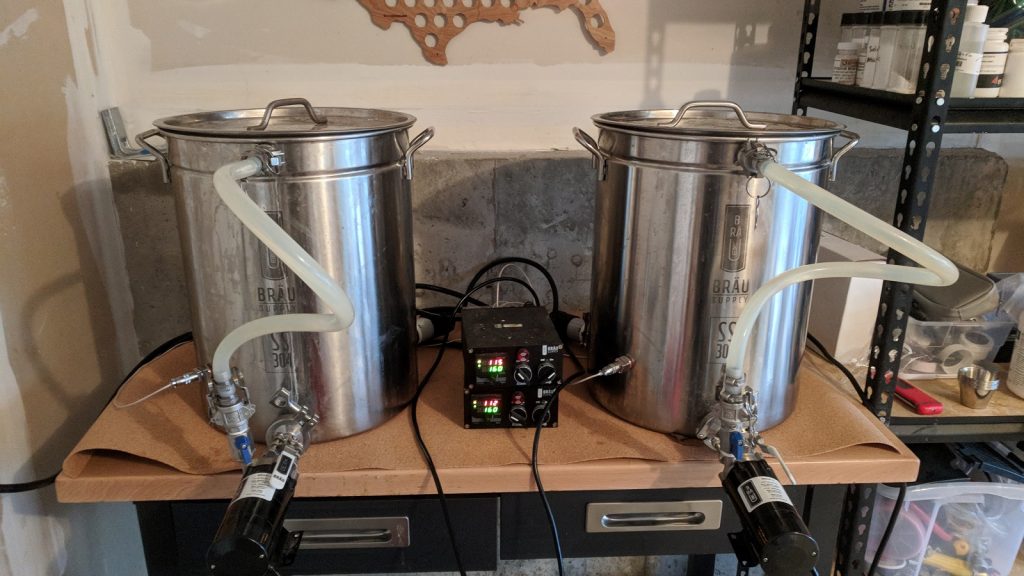
I proceeded to mill 2 identical sets of grain. Due to a small mix-up at my LHBS, I accidentally used double the amount of roasted barley in this batch than I normally would.
Once the water had reached strike temperature, I stirred the grains in and began recirculating the sweet wort.
I checked the temperatures of both mashes and was pleased to find they were the same.
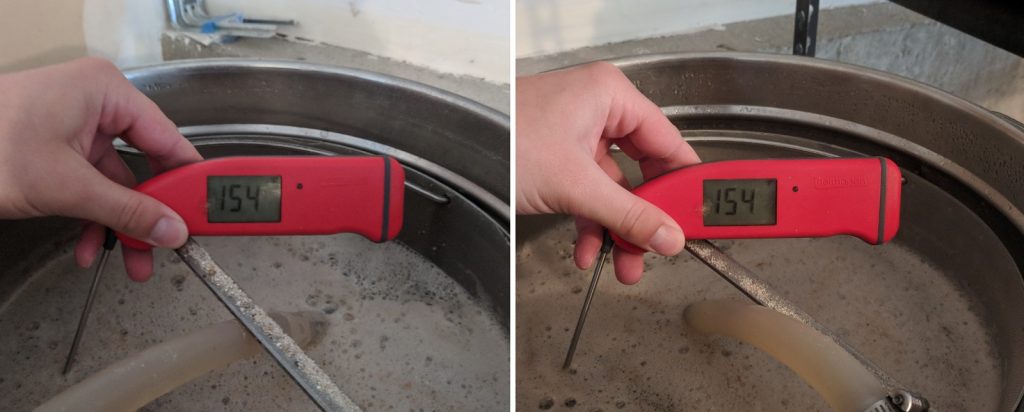
Unsurprisingly, pH readings at 15 minutes into each mash were also identical.
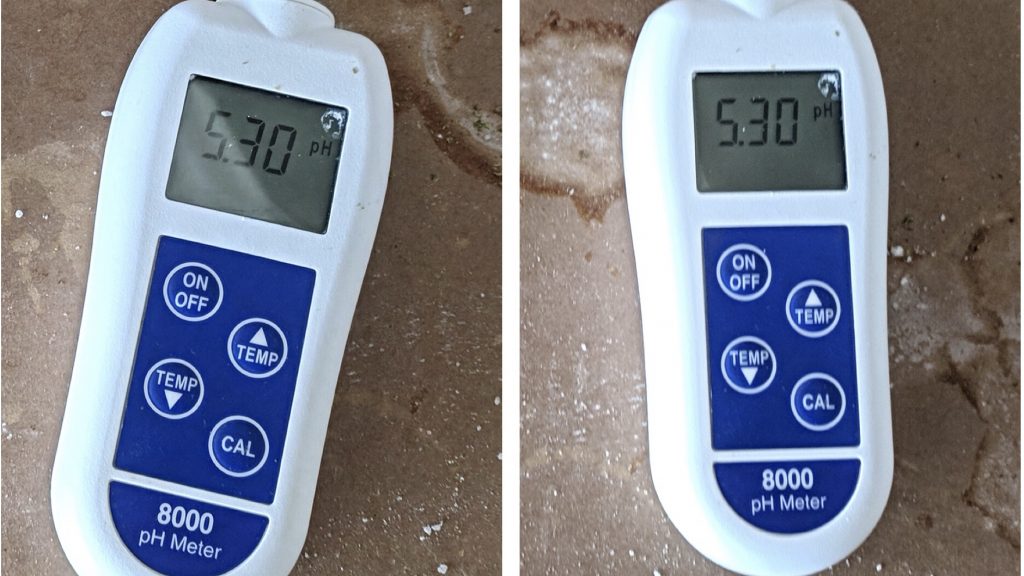
During the mash rest, I weighed out the kettle hop additions for each batch.
With the mash rests completed, I removed the grains from the wort and let them drip until the same pre-boil volume was reached. At this point, I set my temperature controller for one batch to maintain a steady 200°F/93°C while the other batch was set to boil mode as usual. I set the 60 minute time on the no-boil batch as soon as it reached 200°F/93°C, at which point I treated it the same as the boil batch.
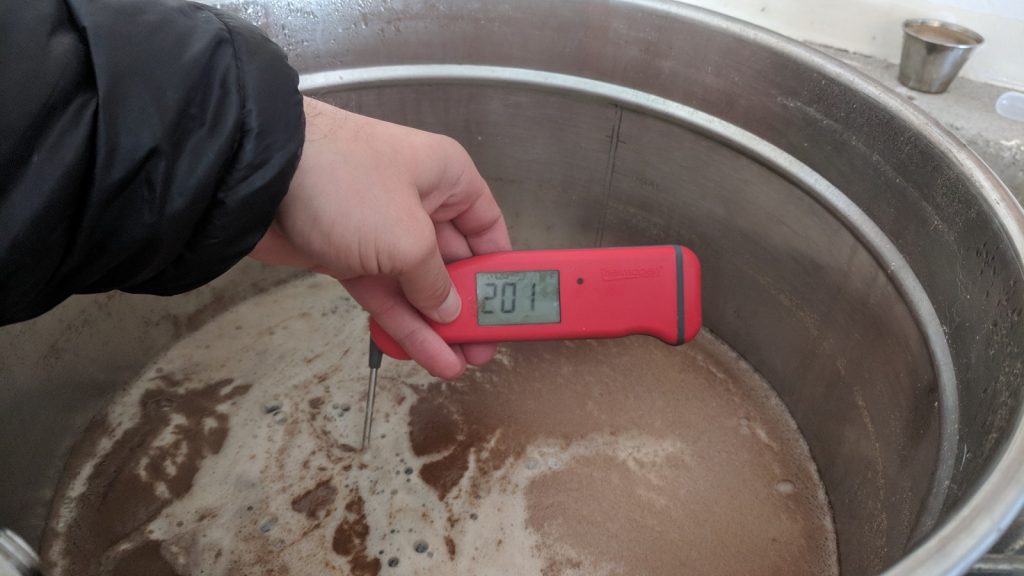
Because the coagulation of proteins is a reported benefit of boiling wort, I opted not to use any kettle finings for this batch to see how the boil impacted clarity. Both batches were chilled after 60 minutes, each wort being run through my CFC directly into a sanitized fermentor.
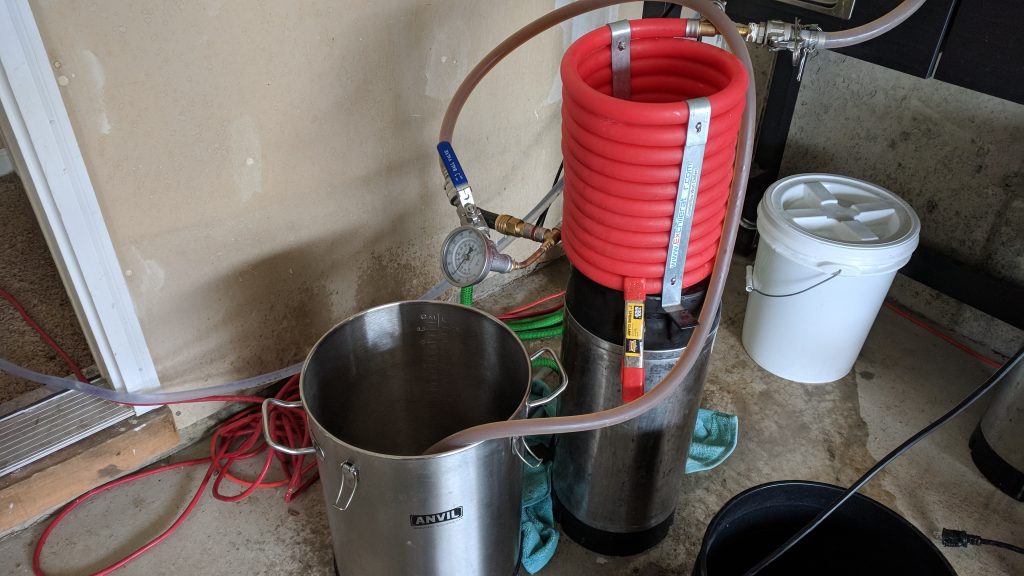
Once in the fermentor, I noticed that the no-boil batch had a little more wort than the boil batch. After shattering my third hydrometer of the year I examined gravity samples with a refractometer and found the no-boil batch had a lower OG than the batch that was boiled.
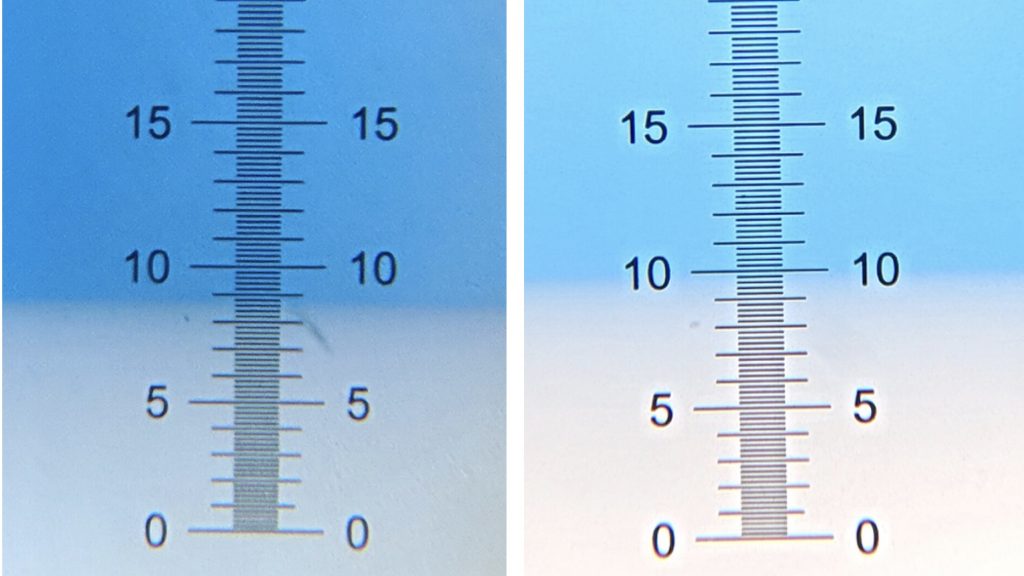
With the wort chilled and placed in a temperature controlled chamber, I pitched the yeast starters I’d made couple days prior.
Fermentation was unremarkable, both started and ended similarly. Once activity was absent, I took hydrometer measurements that showed a rather small difference between the beers.
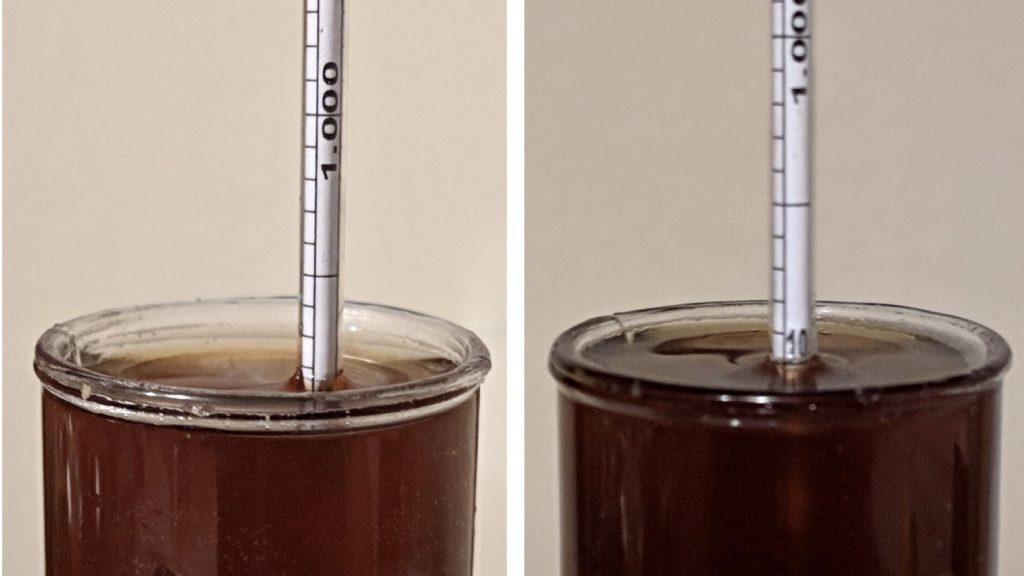
I then racked the beers in to sanitized and CO2 purged kegs.
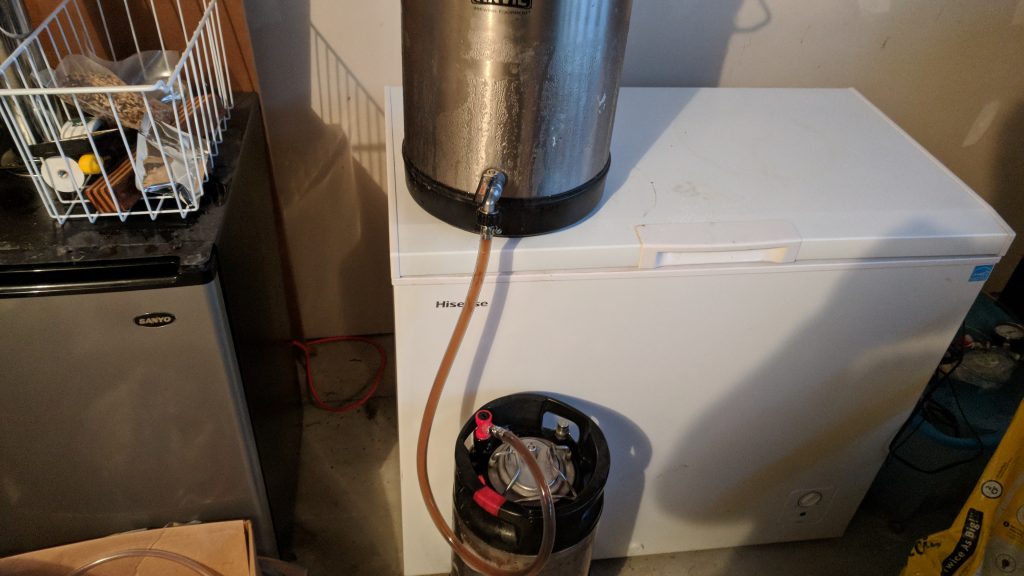
Samples taken at this time showed a subtle yet noticeable difference in color and clarity.
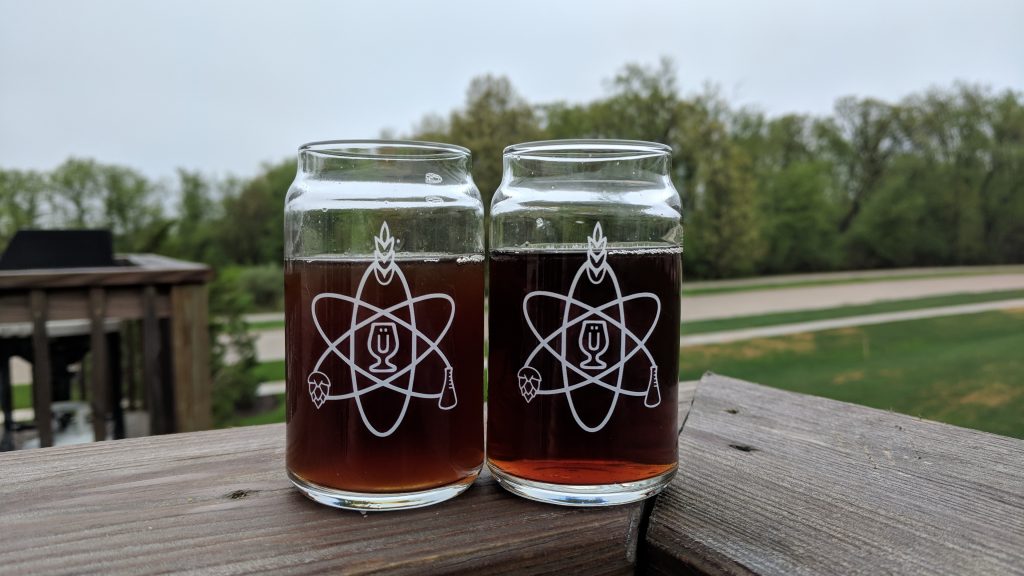
The filled kegs were placed in my kegerator where they were burst carbonated overnight, then left to condition for some time before being served to participants blind to the variable.
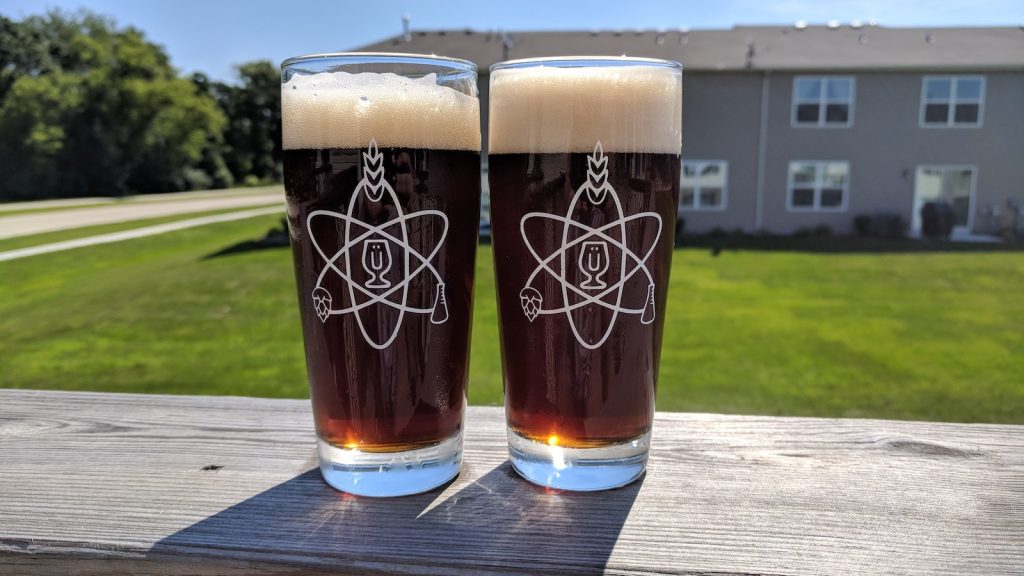
| RESULTS |
A total of 21 people of varying levels of experience participated in this xBmt. Each participant was served 2 samples of the no-boil beer and 1 sample of the boiled beer in different colored opaque cups then asked to identify the unique sample. At this sample size, 12 tasters (p<0.05) would have had to identify the unique sample in order to reach statistical significance, which is exactly how many were able to do so (p=0.021), indicating participants in this xBmt could reliably distinguish a beer where the wort was held at 200˚F/93˚C for 60 minutes from one that was boiled for 60 minutes.
The 12 participants who made the accurate selection on the triangle test were instructed to complete a brief preference survey comparing only the beers that were different. A total of 8 tasters reported preferring the beer where the wort was boiled, 2 said they liked the no-boil beer more, 1 person had no preference despite noticing a difference, and 1 taster reported perceiving no difference.
My Impressions: I went into this xBmt convinced there would be a large difference in these beers, but I can honestly say I don’t share the experience of the participants– I had an incredibly difficult time telling these beers apart. Out of 5 blind triangle test attempts, I was only correct twice. Both were smooth with notes of toast, roast character, and a hint of malt sweetness. I was happy with both beers.
| DISCUSSION |
Given how critical achieving a strong boil is said to be in the production of quality beer, the fact participants in this xBmt were able to tell apart a beer where the wort was held at just under a boil from one boiled in a more traditional manner isn’t terribly shocking. And while we tend not to focus too much on the preference data given how subjective what one enjoys, it’s interesting to note that a solid majority of the tasters who picked the odd-beer-out on the triangle test chose the traditionally boiled beer as the one they preferred.
I want to be sure not to come off the wrong way here, as this is just a single data point, much more research is needed before we can start shaping any conclusions. I’ve not had much personal experience with beers made on these new fangled countertop brewing systems, and while the few I’ve sampled haven’t been bad, I’ve always perceived something different about them. Barring any bias, I’ve wondered if this has to do with the fact some of these units never actually bring the wort to a boil, but rather do basically what I did with the no-boil beer in this xBmt. The hazier appearance of my no-boil beer also aligns with what I’ve seen from beers made on these countertop systems.
Given the effort I took to ensure both batches were treated as similarly as possible, I’m compelled to believe the differences were a function of the variable. But it could be something else. And honestly, the only difference I personally noticed was in appearance, to me the beers smelled and tasted exactly the same. While I still find it curious that some of these really cool gadgets rely on a no-boil approach, the positive feedback I’ve heard from users is enough to keep me from chastising them. Will I be skipping vigorous boils from here on out? No way. But based on my own experience with the beers, I won’t be so quick to dismiss no-boil approaches either, in the right context.
If you have any thoughts about this xBmt, please do not hesitate to share in the comments section below!
Support Brülosophy In Style!
All designs are available in various colors and sizes on Amazon!
Follow Brülosophy on:
FACEBOOK | TWITTER | INSTAGRAM
If you enjoy this stuff and feel compelled to support Brulosophy.com, please check out the Support page for details on how you can very easily do so. Thanks!


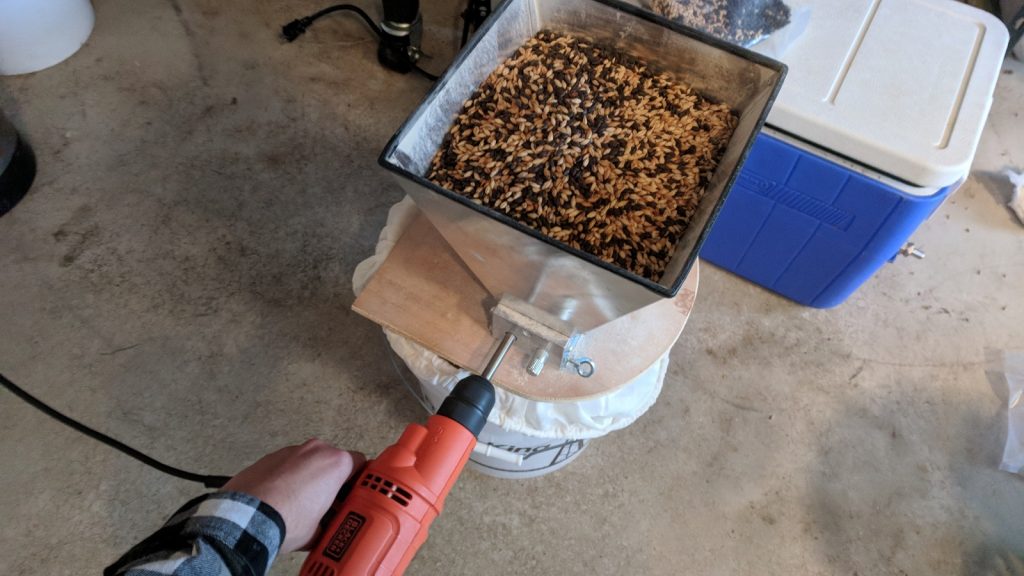

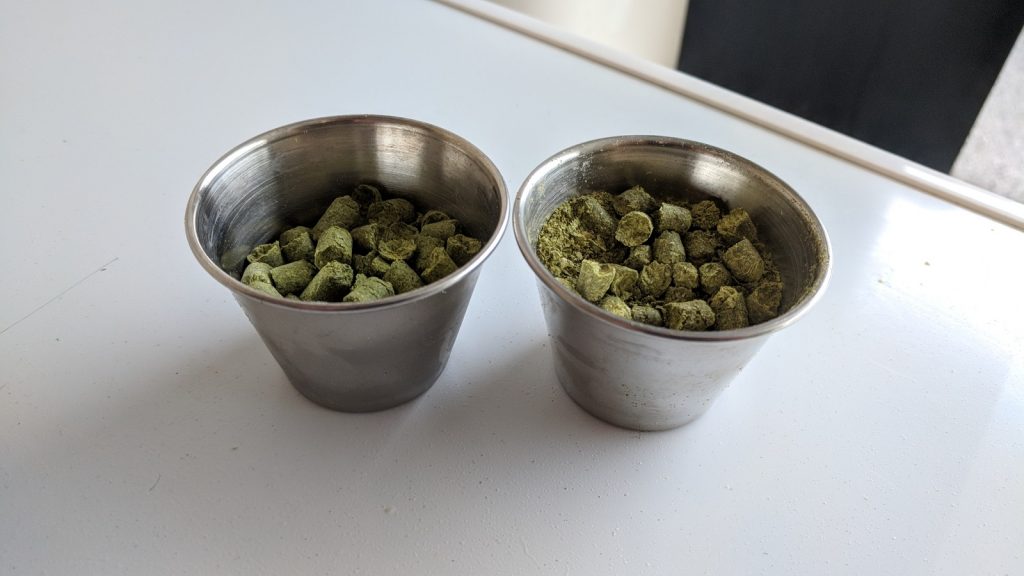
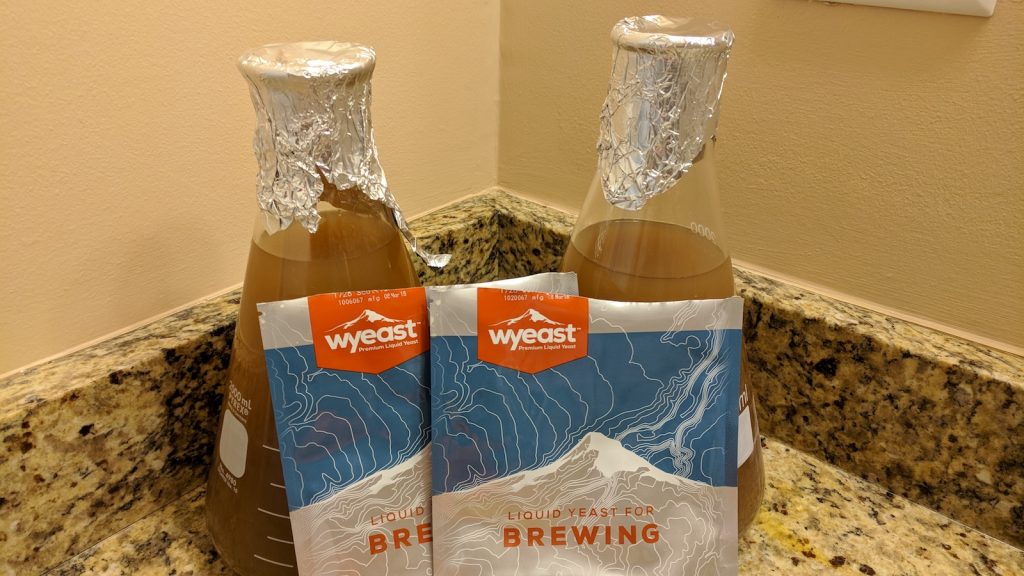











40 thoughts on “exBEERiment | No-Boil Effect: Evaluating The Impact On Scottish Heavy”
Again there are results that one miss in identification would change the outcome and one of those who selected correctly later stating they perceived no difference. I don’t see how the choosing of the odd beer out aligns with the taste perception? Seems to me this person is suggesting no difference even though they happened to select correctly.
It’s still all an interesting result
The experiment was to see if folks actually could tell a difference. Then, of the folks who could, which beer they enjoyed more. I’ve always stayed away from the 120v brewing systems because they didn’t do a very good job bringing things to a boil but if I’m ever in a situation where I can only brew on a 120v system I won’t be as worried about it.
The triangle test and “selection threshold” is set to account for people “just guessing”. It’s built in to the p-value. These guys use a p-value of 0.05, meaning they’re willing to take a 5% chance that the result they get is a false positive.
Of course, selecting the alpha at 0.05 is the norm, what beta are they targeting?
That’s exactly what it’s saying. Its how many of these Xbmts go. This one was not a slam dunk for preferences. It was just beyond statistical significance.
Like the author stated, it’s not enough to give up a nice roiling boil, but it’s enough to not call BS on Grainfather incarnations that are out there that do not come to a full boil. You can make decent beer using whichever method you ultimately choose.
8/2 is pretty much a preference slam dunk, IMO.
Robert Neuhaus, just a little over half (12 of 21) of the participants were able to tell a difference. That is, by definition, statistically significant but far from some of the “slam dunks” they’ve had with other xbmts.
Ken This is a common criticism of the triangle test but is factored into the statistics of it. Besides, even if someone says they didn’t perceive a difference but selects the right cup, it might be that they just couldn’t put it into words.
Now that’s a good point- not able to articulate. I always thought when on the edge stating statistical significance with then a reviewer stating I don’t perceive a difference would invalidate that result.
Ah well, we know nothing is absolute when deing with tastes, and these exbeeriments are always appreciated!
I switched over to a Grainfather 18 months ago and haven’t looked back. I don’t know about other systems, but I do get a boil. It’s slow and not vigorous, but nevertheless a boil at around 210deg.
This experiment may need to be closer to the actual “low boil” temp of these systems, and not 200 which seems way off.
My beers are still coming out great, and I’m still able to win a gold medal at Bluebonnet Brewoff using my Grainfather
200F is referring to the Picobrew if I’m not mistaken that machine recircs 200F water through the system and a keg.
It corrects for altitude, but at near sea level the Zymatic holds at 207 F.
This wasn’t specifically about the Grainfather, or any specific system. The goal wasjust a temp above isomerization and DMS formation. I’m looking forward to trying this one again with different “boil” temperatures.
Thanks for the work. I was very curious for the effect on vigor boil.
But in my opinion this experiment has another variable which might confuse the tasting experience of the tasters: Different OG and FG values of 2 beers. Would it be better if you had dilluted the vigor boil wort to the same value with non-vigor boil beer?
The OG/Fg difference are certainly additional variables here, but since they were variables introduced by the selected variable, I didn’t adjust for them. The adjustment would also have introduced its own variables, and I’m pretty skeptical that a difference that small would have been noticeable for people. But, to your credit, I’d love to do this one again and then account for those variables. All in good time!
I use a grainfather as well, and I live at 6000ft, so my boil temp is about 201. With the grainfather I get a good boil. I wouldn’t say it is vigorous but it is a good rolling boil and, if it’s full I do have to watch out for boil over. I would have thought the difference would have been much greater.
Me too! Was convinced it would be drastically different, but clearly in this example people could pick up a difference. Like I said, I’m not too quick to dismiss the “no-boil” beer, but I’ll be continuing to boil my beer as I normally do.
Unfortunately, you may have only determined that people can tell the difference between a 4%ABV and a 3.4%ABV beer.
Diluting the boil portion to control and match the original gravity variable may have made the experiment a better measure of what is it trying to investigate — the effects of boil vs almost-boil temperature/agitation..
Additionally, the temperature of the boil/no-boil probably affected the IBU slightly, though that would be a little harder to control for (requiring use of pre-isomerized alpha acid extract instead of raw hops).
I should note that I am interested in more experimentation on this, and not just being critical. I’ve experimented with various no-boil (or even pasteurization-only) batches with generally good results, especially in simple sours.
Not unfortunate at all, IMO. The difference in gravity was a variable that was introduced by the intended variable, and since this was significant, it would be the next step to perform the xbmt again while accounting for the introduced variables. I think you’re totally right for what it’s worth, that variable may be a factor in the results, I’m just not sold it is for sure.
I also don’t want to assume people can tell the difference between two beers where gravity is the only factor. I honestly am not sure many people could tell the difference between a 4% and 3.4% beer.
Edit for your second comment: Dude, feel free to be critical! That is totally welcome. Interested to hear more about your no boil experiments as well! These beers were way more similar than I thought they would be.
Nice exbeeriment Matt! Out of curiosity how much more water was in the not boiled batch? Just wondering if the lower OG was a function of temperature or volume. 5 points difference in this low ABV recipe seems pretty significant. Thanks for your hard work!
PS awesome name for the brew btw :-p
Nice xBmt! Would love to see a Pilsner or style more sensitive to DSM off flavors. Maybe I will beat you too it! Cheers!
I was thinking the same thing. A nice pilsner or even a SMaSH with IBU’s in the low teens.
I’d love to see a comparison between a boiled beer and a batch that goes straight from the mash tun to the fermenter, in the style of Norwegian farmhouse ales. 200 degrees is close enough to boiling that there could be some proteins dropping out and some evaporation, which probably wouldn’t happen at mash temps.
Those of us who live at altitude reach boiling at around 200F. Could this mean that our boils will never be as effective as those at sea level? In other words, is the point of the book to hold the wort at a certain temperature for a time or to have the “rolling” action of the boil? Or both?
Depends where you live, here in Australia we run 240volts. So an Australian grainfather boils like crazy, even on just one element, if you live in 110volt land then an insulation jacket might make the difference to balance heat loss wilth input. I run a robobrew – grainfather imitation and it boils really well. You could also try the lid. It has a decent hole in it to release volotiles but will get the wort boiling harder.
Yeah, I have a brewjacket and my GF boils just fine–I live right at sea level.
Regarding DMS, it will volatilize readily at temperatures between 50-100C. A vigorous boil is not necessary to boil it off. http://www.milkthefunk.com/wiki/Dimethyl_Sulfide#Volatility_of_DMS
And with that malt bill, there won’t be any significant amounts of DMS to volatize anyway. Or am I missing something?
Enjoyable, as always, thanks. The difference in gravity may indeed have been introduced by the intended variable, but it is not one that would be present in the situation from which the exbeeriment emanated; countertop system brewers will have scaled and adjusted their brew for an intended FG and OG. By not making an adjustment for the variation in boil-off, you’ve made beers that differ predictably in their gravity and in the concentration of everything extracted from the grains (and hops). So I concur with Andrew. It sounds like you’re onto it, though.
Makes total sense. Could I then assume that the grain adjustment would be according to the difference in the OG between the two brews?
In addition would a longer mash time, Maybe a 90 minute mash, help adjust the OG as well?
I am actually a fan of the no boil method and have produce very good beers with it. I have never actually done a comparison but have always made some logical adjustments for that.
Thanks. Nick
Perhaps the major differences between boil and no boil are not flavor but shelf life and stability. What were the final pH readings of each beer? I am finding it a good idea to check pre boil, post boil, and finished pH as a process monitor. Does the rolling boiling reduce pH and therefore better coagulation? Which beer oxidizes faster? I would also suggest bottling up some of each and store for 6 mos at room temp and cold and see. WHat about DMS production and reduction? A beer style with pils malt and maybe worth testing (I recall there was an exbeeriment on DMS a while ago). What about comparing no boil no chill to boil and chill? Cheers.
It would be interesting to know the experience level of participants who preferred the traditional boiling beer.
This seems like a good incremental step toward a real difference point like 170 vs boil. No one would actually just do this unless the were trying to preserve more wort for the fermenter since it pretty much requires the same energy and time. But I can see the long game here very good stuff
I would be interested to see a similar experiment with a protein rich grain bill and or flaked adjuncts… I’ve done a noboil NEIPA which had a fantastic mouthfeel which I speculate is due to the no boil not breaking down all those proteins we want for mouthfeel.
Sounds super interesting! I agree, I’d love to see other iterations on this xbmt. I’ve got a few other things on my plate, but I’ll add it to the list!
So happy you did this exbeeriment, I decided to make a no boil pale ale in my 240v 10 gallon breweasy. I kept the temperature at 170 degrees vs going to 200, also used less water to account for boil off. End result came out pretty tasty and my friends have all loved it, flew the 10 gallon batch fairly quickly.
I was sceptical about buying a Robobrew but have since done around 30 batches and won several medals with mine. The boil is slightly weaker but I still manage to boil off around a gallon of wort each time.
MYRIAD